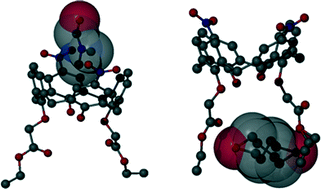Fine tuning of crystal architecture by intermolecular interactions: synthon engineering
Abstract
There has been a long time effort to influence or favourably fine tune structural properties by introduction of substituents or guest molecules of different sizes, shapes and chemical composition to consequently alter physico-chemical properties of the respective crystals. These attempts require the recognition, understanding and application of intermolecular interactions, crystallographic and, in case of occurrence, non-crystallographic symmetries. It brings us to the field of crystal engineering, which aims to produce new substances with required properties based on the knowledge of the structural properties of already characterised solids. A series of calixarene crystal structures are presented where the crystal packing is determined by spatial or by electrostatic effects. A series of laterally substituted calixarenes where both steric requirements and electrostatic forces play a role in the crystal architecture shows how the supramolecular synthon can be engineered.

- This article is part of the themed collection: Structural Macrocyclic Supramolecular Chemistry

 Please wait while we load your content...
Please wait while we load your content...